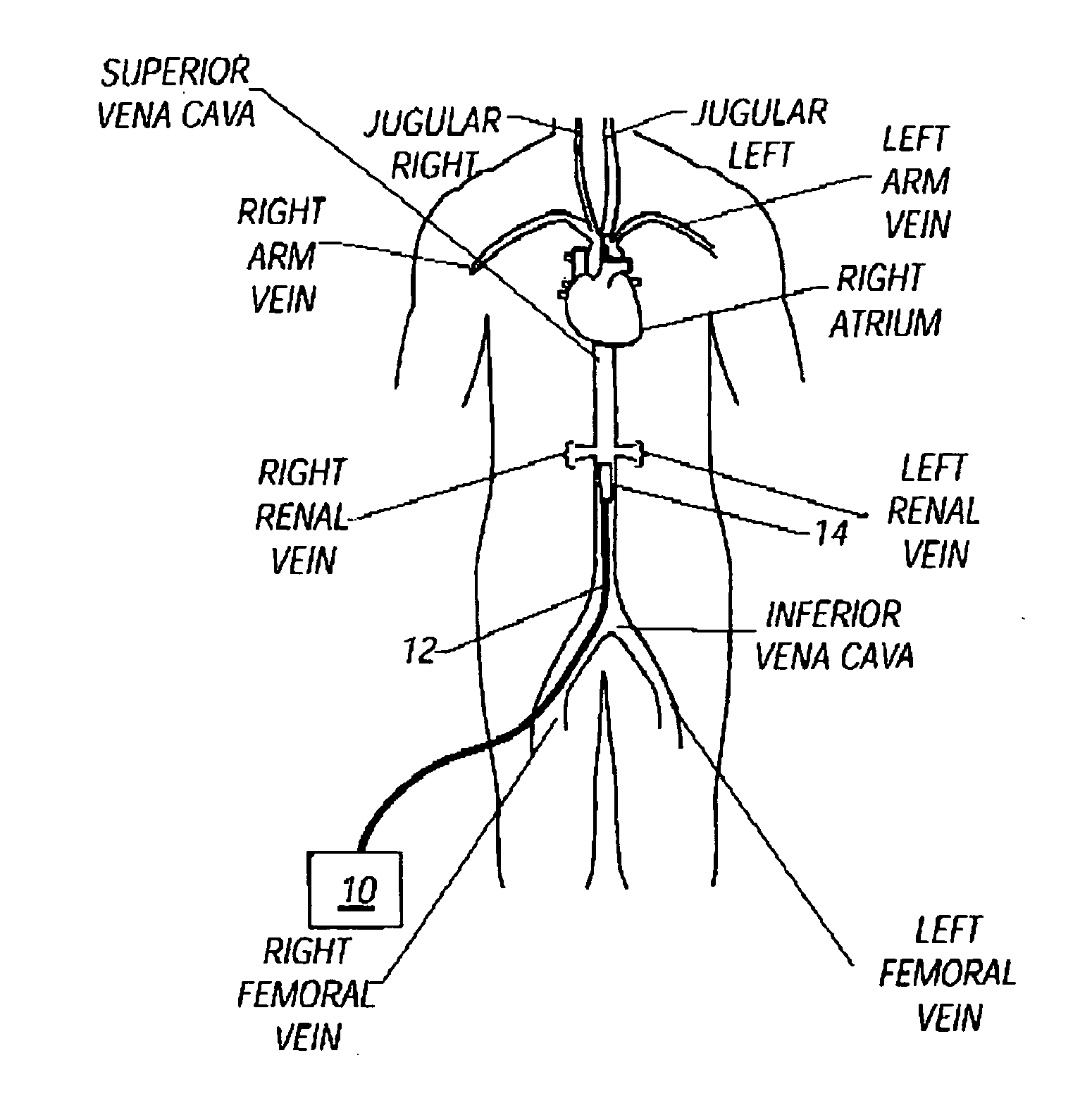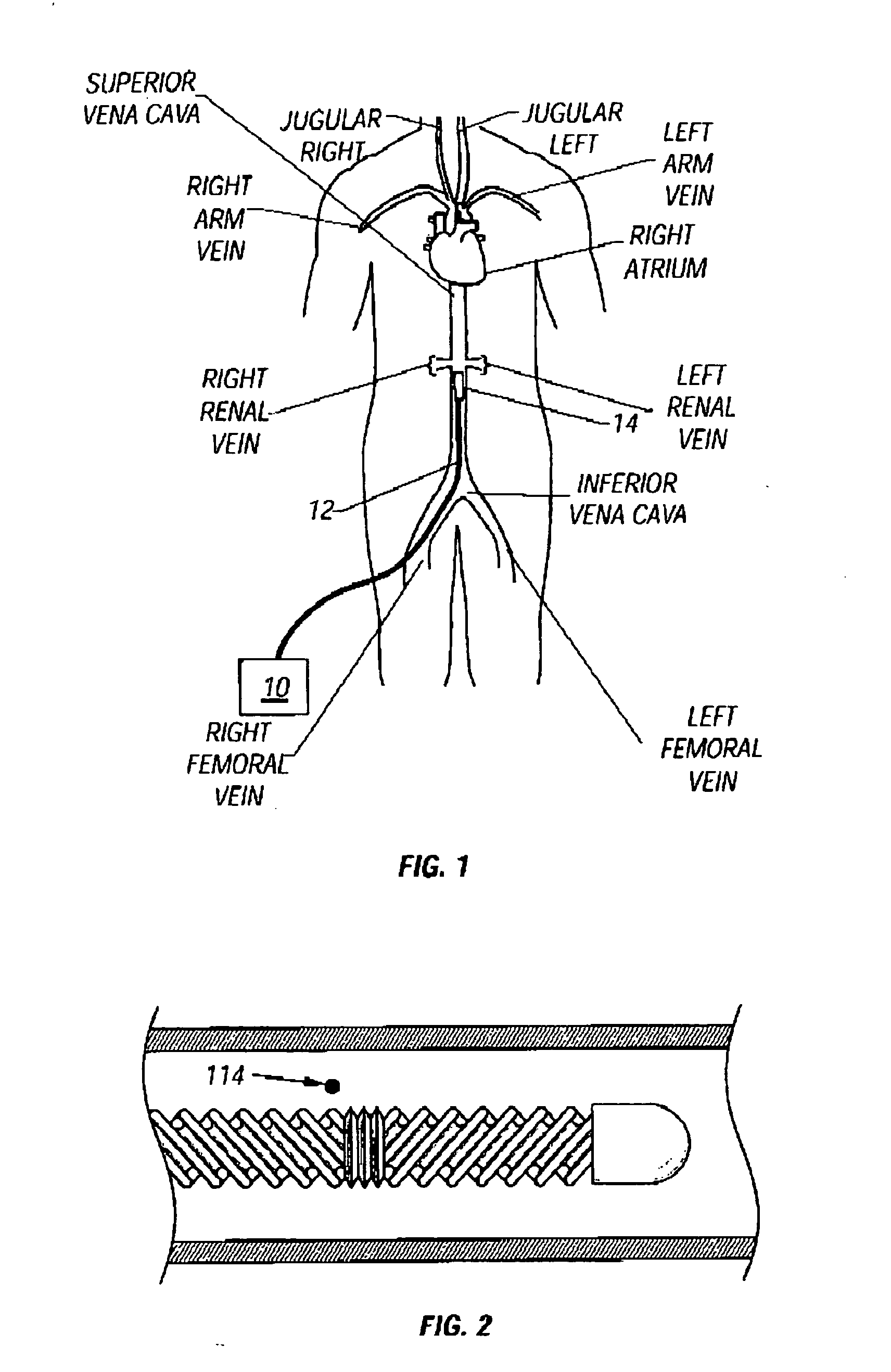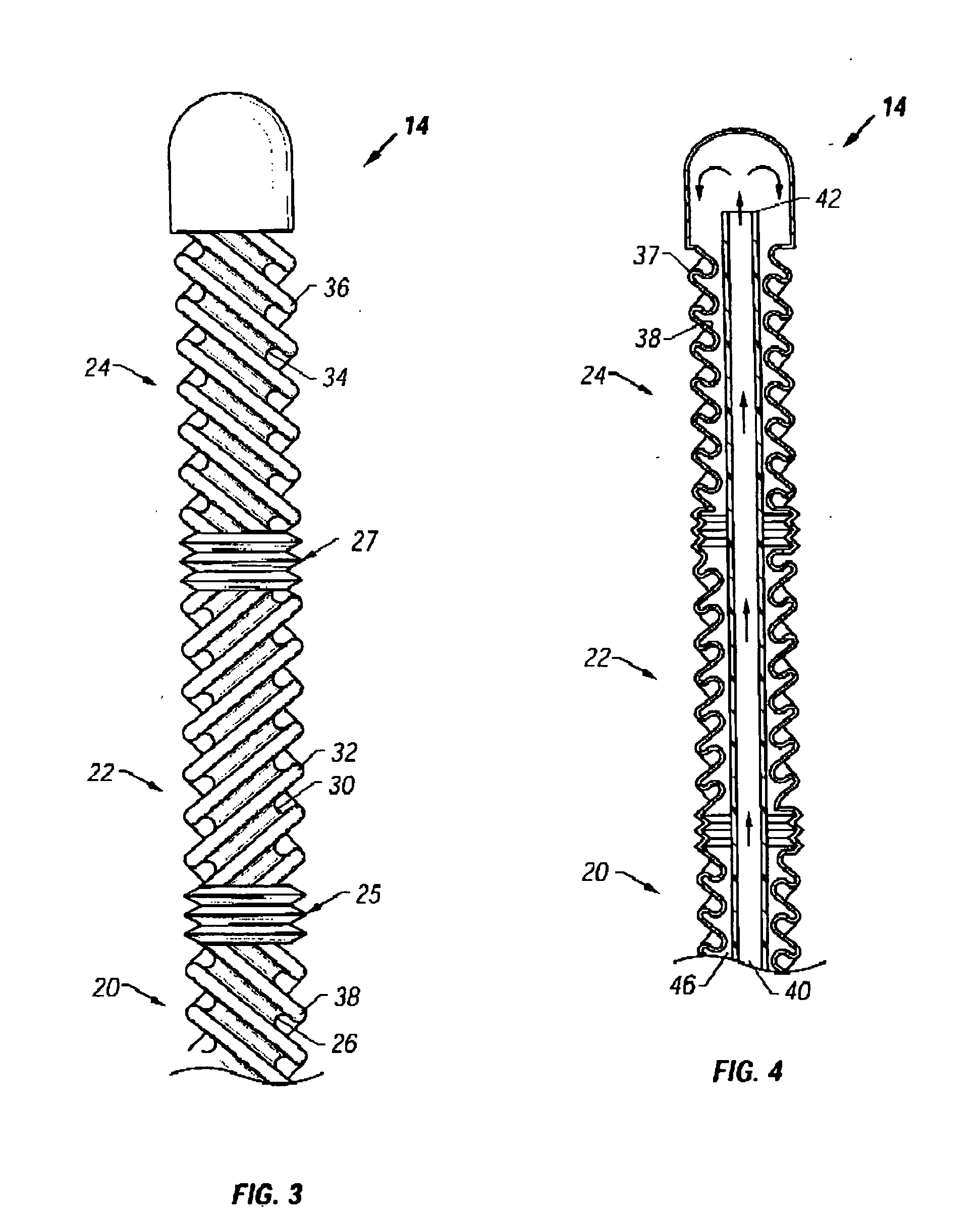Medical procedure
- Summary
- Abstract
- Description
- Claims
- Application Information
AI Technical Summary
Benefits of technology
Problems solved by technology
Method used
Image
Examples
Embodiment Construction
[0062] The present invention now will be described more fully hereinafter. This invention may, however, be embodied in different forms and should not be construed as limited to the embodiments set forth herein.
[0063] According to one aspect of the present invention, a procedure is provided by which a surgeon is able to perform a coronary bypass procedure with hypothermic protection, while at the same time avoiding many of the disadvantages associated with the use of traditional external cardiopulmonary bypass systems and aortic clamping procedures.
[0064] In one embodiment of the present invention, a heat transfer element is provided within a blood vessel of the body such that blood is cooled in vivo upon contact with the heat transfer element.
[0065] The heat transfer element can be provided in either arterial or venous blood vessels. One preferred location for the heat transfer element is the inferior vena cava, which typically ranges from 15 mm to 25 mm in diameter. A preferred ...
PUM
 Login to View More
Login to View More Abstract
Description
Claims
Application Information
 Login to View More
Login to View More - R&D
- Intellectual Property
- Life Sciences
- Materials
- Tech Scout
- Unparalleled Data Quality
- Higher Quality Content
- 60% Fewer Hallucinations
Browse by: Latest US Patents, China's latest patents, Technical Efficacy Thesaurus, Application Domain, Technology Topic, Popular Technical Reports.
© 2025 PatSnap. All rights reserved.Legal|Privacy policy|Modern Slavery Act Transparency Statement|Sitemap|About US| Contact US: help@patsnap.com



